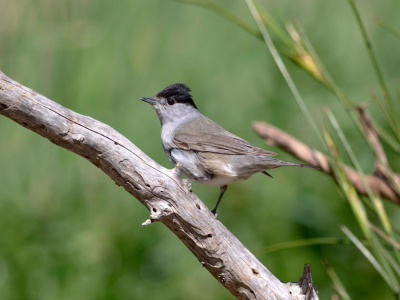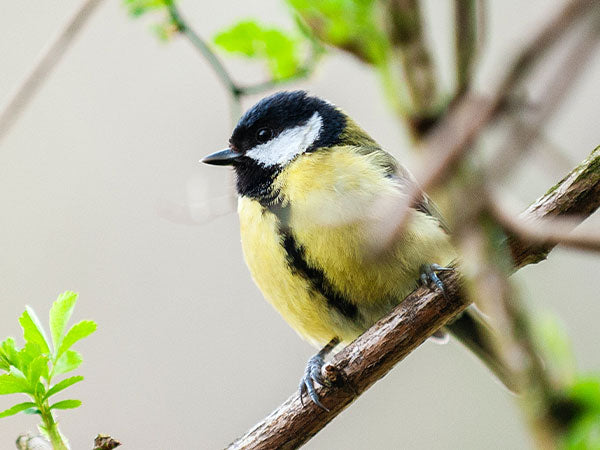What birds can you see in your garden this March?
Seeds can be scarce in the countryside at this time of year, so now is a good time to attract finches, buntings and other seed-eating birds into your garden.
Some gardens will see early migrants passing through in March. Although Blackcaps are increasingly familiar garden birds in the winter months, the majority of our Blackcaps migrate here in spring. A small number of Chiffchaffs also spend the winter in the UK, but now is when most of the population begins to return from Africa, with some birds stopping off in gardens after they arrive.
Garden Birds in March
1. Blackcaps

2. Chiffchaffs

Birds including Robins, Song Thrushes, Blackbirds and Greenfinches are all beginning to sing at this time of year to establish their territory and attract a mate. The dawn chorus will continue to build as spring gets underway.
3. Robins

4. Song Thrushes

Although some garden bird species begin nesting in March, there’s still time to put up nest boxes for birds like Blue and Great Tits, which depend on caterpillars to feed their young and so wait until later in the season.
5. Blue Tits

6. Great Tits

What to Feed
-
If you are new to feeding birds, you can choose a ‘year round’ bird food. This is suitable for all seasons and all popular garden birds. Peckish Complete Seed Mix has 12 varieties of high energy seeds and nuts and will attract a wide range of birds
-
If you are keen to attract a specific type of bird, there are specific foods available. For example, a Robin Insect Seed Mix is blended with mealworms, naked oats and sunflowers hearts that are small and ideal for a Robin’s beak
How to Feed
-
You will know how much food to put out based on how much is left. If the food is taking days to be eaten, simply reduce the amount you put out
-
Use several feeding stations to reduce the amount of birds feeding in one spot
-
If you use a feeding table, make sure to keep it clean
-
Use a ground feeding tray if you prefer to place food on the ground . Just remember to remove any leftover food before nightfall to prevent attracting unwanted visitors
-
Avoid putting feeders under garden features where birds may perch or roost
If you would like to learn more about understanding birds, in particular about changing bird populations visit the charity – British Trust for Ornithology (BTO)



